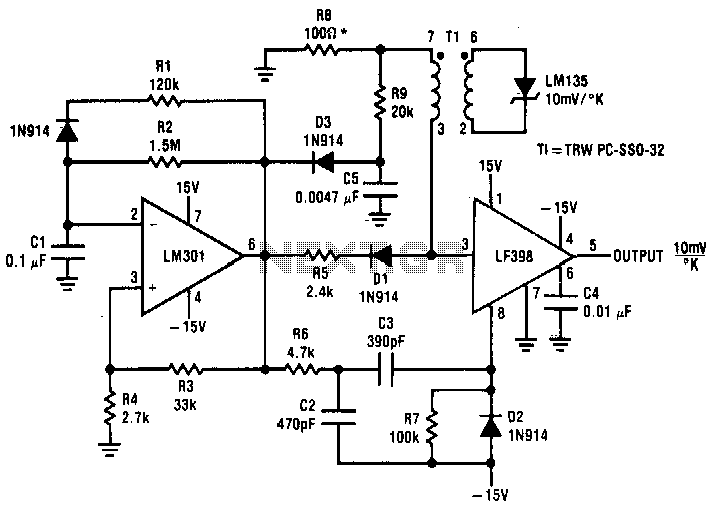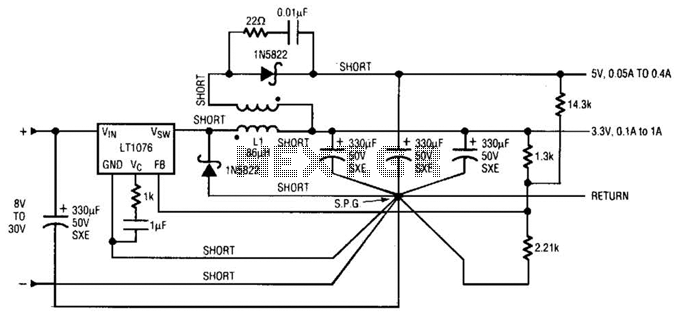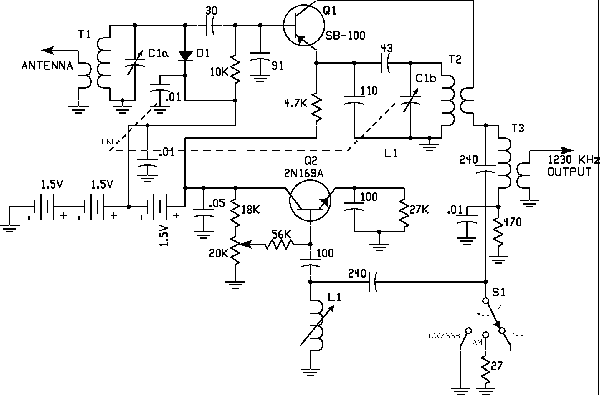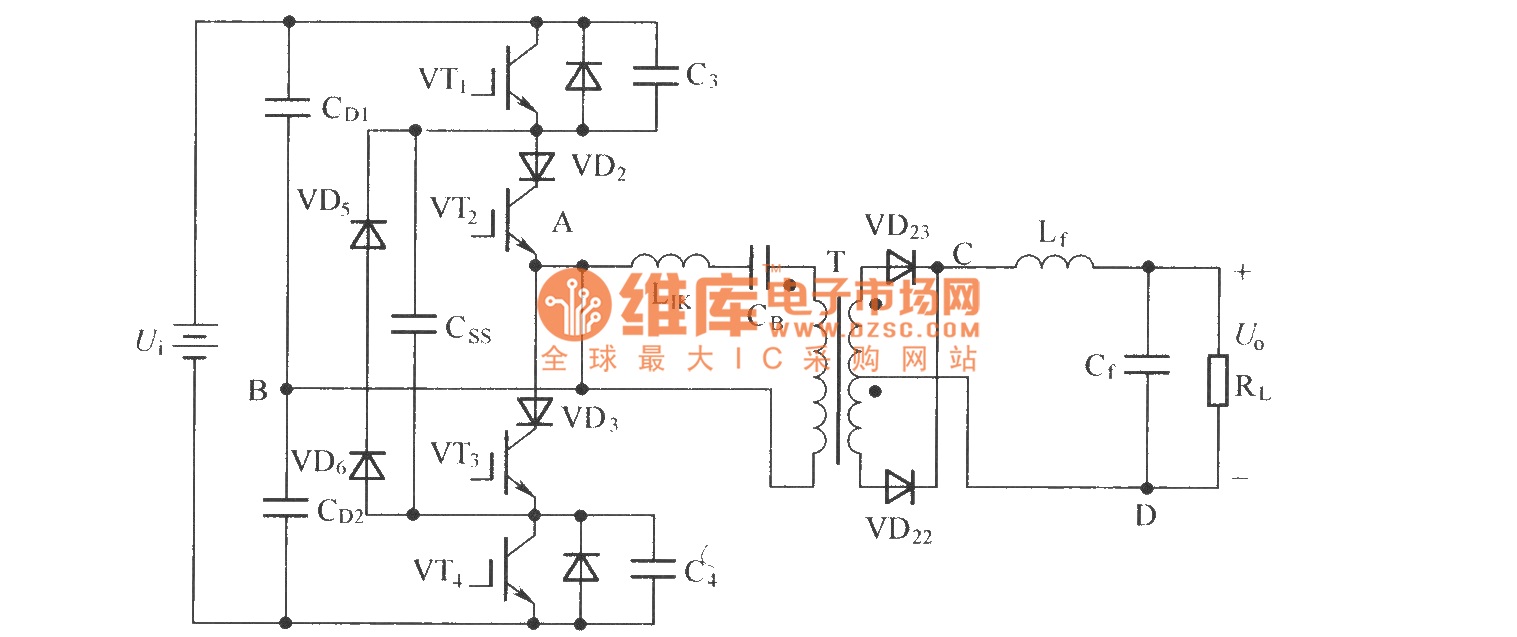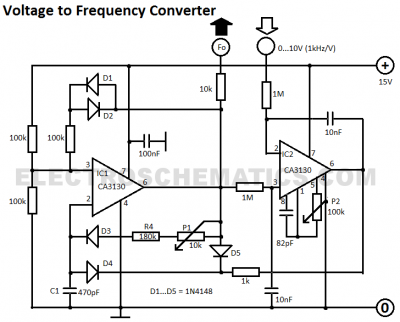
Voltage-to-current converter
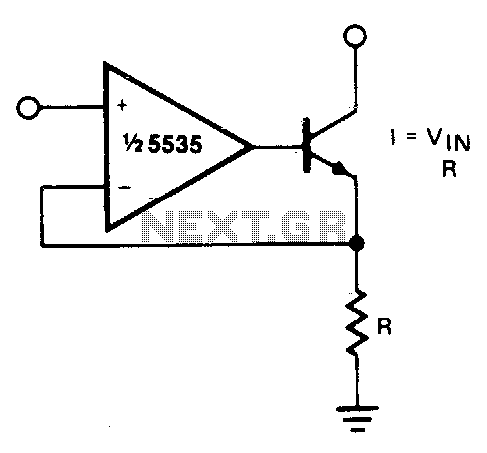
The output current is Iqut = Vin/R. For negative currents, a PNP transistor can be utilized, and for improved accuracy, a Darlington pair may be substituted for the transistor. With careful design, this circuit can be employed to control currents of several amps. Additionally, unity gain compensation is essential.
The described circuit operates on the principle of current sensing and regulation, where the output current (Iqut) is determined by the input voltage (Vin) divided by a resistance (R). This configuration is typically used in applications requiring precise current control. The use of a PNP transistor allows for the management of negative currents, which is essential in certain circuit designs where the load may require reverse polarity operation.
In scenarios demanding higher current accuracy, substituting the standard PNP transistor with a Darlington pair is advisable. A Darlington pair consists of two bipolar junction transistors (BJTs) connected in such a way that the current amplified by the first transistor is fed into the second transistor, resulting in a significant increase in current gain. This configuration enhances the sensitivity and accuracy of the current sensing mechanism, making it suitable for applications where precision is paramount.
To ensure stability and prevent oscillations in the circuit, unity gain compensation is required. This involves adding a compensation capacitor in the feedback loop to maintain a stable gain across the operational range. The capacitor's value must be carefully calculated based on the circuit's frequency response and load conditions to achieve the desired performance without introducing phase shifts that could lead to instability.
Overall, with meticulous design considerations, this circuit can effectively manage high currents while maintaining accuracy and stability, making it a valuable component in various electronic applications such as power supplies, motor controllers, and current regulators.The current out is Iqut—Vin/R. For negative currents, a PNP can be used and, for better accuracy,-a Darlington pair can be substituted for the transistor. With careful design, this circuit can be used to control currents of many amps Unity gain compensation is necessary.
The described circuit operates on the principle of current sensing and regulation, where the output current (Iqut) is determined by the input voltage (Vin) divided by a resistance (R). This configuration is typically used in applications requiring precise current control. The use of a PNP transistor allows for the management of negative currents, which is essential in certain circuit designs where the load may require reverse polarity operation.
In scenarios demanding higher current accuracy, substituting the standard PNP transistor with a Darlington pair is advisable. A Darlington pair consists of two bipolar junction transistors (BJTs) connected in such a way that the current amplified by the first transistor is fed into the second transistor, resulting in a significant increase in current gain. This configuration enhances the sensitivity and accuracy of the current sensing mechanism, making it suitable for applications where precision is paramount.
To ensure stability and prevent oscillations in the circuit, unity gain compensation is required. This involves adding a compensation capacitor in the feedback loop to maintain a stable gain across the operational range. The capacitor's value must be carefully calculated based on the circuit's frequency response and load conditions to achieve the desired performance without introducing phase shifts that could lead to instability.
Overall, with meticulous design considerations, this circuit can effectively manage high currents while maintaining accuracy and stability, making it a valuable component in various electronic applications such as power supplies, motor controllers, and current regulators.The current out is Iqut—Vin/R. For negative currents, a PNP can be used and, for better accuracy,-a Darlington pair can be substituted for the transistor. With careful design, this circuit can be used to control currents of many amps Unity gain compensation is necessary.
